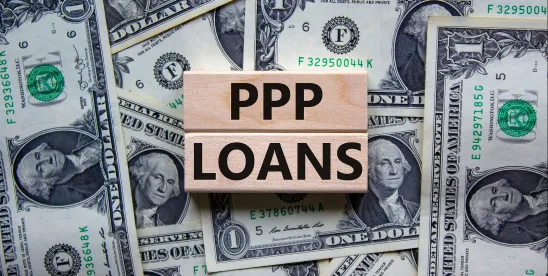As federal contractors continue to navigate the post-pandemic compliance landscape, a recurring issue has emerged in government audits and incurred cost reviews: whether and how contractors must credit the government for Paycheck Protection Program (PPP) loan forgiveness amounts received during the performance of cost-reimbursement contracts. The issue has raised significant questions regarding allowability, allocability, and the application of credit principles under the Federal Acquisition Regulation (FAR).
This blog post outlines the legal and regulatory framework governing PPP loan forgiveness in the context of cost-reimbursement contracts, highlights recent developments in audit and review practices, and offers guidance for contractors preparing for incurred cost submissions or Defense Contract Audit Agency (DCAA) reviews.
The Basics: PPP Loans and Forgiveness
The PPP was created under the CARES Act to provide emergency financial assistance to businesses affected by COVID-19. Contractors who received PPP loans could apply for forgiveness if the loan proceeds were used for eligible expenses, such as payroll costs, rent, and utilities.
While the loans were designed to provide economic relief, federal cost principles under the FAR present a separate compliance hurdle for contractors, especially those with cost-type contracts.
FAR Requirements for Credits and Cost Allowability
The key regulatory provision is FAR 31.201-5, which addresses the treatment of applicable credits. It states:
“The applicable portion of any income, rebate, allowance, or other credit relating to any allowable cost and received by or accruing to the contractor shall be credited to the Government either as a cost reduction or by cash refund.”
When a contractor receives PPP loan forgiveness covering costs also billed to the government, the forgiven amount may constitute an “applicable credit” under this provision.
Additionally, FAR 31.201-1 (Composition of total cost) and FAR 31.201-4 (Allocability) further reinforce that costs must be properly allocated and cannot result in the government subsidizing costs not actually borne by the contractor.
DCAA and Agency Audit Practices
In the years following widespread PPP loan forgiveness, the DCAA and other audit agencies have begun scrutinizing contractor cost submissions more closely. During incurred cost reviews, auditors are examining whether contractors received loan forgiveness and, if so, whether they appropriately credited the government.
Some agencies, including the Department of Defense, have issued guidance emphasizing that contractors generally must not be reimbursed for costs covered by PPP loans that were forgiven. Where contractors billed the government for payroll or other expenses and also received PPP forgiveness for the same costs, auditors may seek cost reductions or refunds.
Challenges and Legal Considerations
Contractors face several challenges in responding to PPP credit issues:
- Tracking and Documentation – Contractors must be able to show how PPP funds were used and how those costs were allocated across contracts, including distinguishing between commercial and government work.
- Timing of Forgiveness – Since forgiveness often occurred after costs were incurred, some contractors did not know at the time of billing whether the costs would ultimately be credited. This timing mismatch can complicate how credits are reflected in incurred cost submissions.
- Double Recovery Risks – The central legal risk is “double-dipping”: recovering the same cost from both the government and through PPP loan forgiveness. Contractors must be vigilant in avoiding this outcome.
Best Practices for Contractors
- Identify and segregate PPP-funded costs from government-reimbursed costs wherever possible.
- Maintain detailed documentation of how PPP funds were used and the specific costs covered.
- Amend incurred cost submissions to reflect forgiven PPP amounts as credits if necessary.
- Consult with legal and accounting professionals to ensure compliance with FAR credit requirements.
- Engage proactively with auditors, especially if PPP forgiveness occurred during or after the relevant cost periods.
Conclusion
While PPP loans were a lifeline for many businesses during the pandemic, they come with continuing compliance obligations for government contractors. The government’s position — reinforced in audits and reviews — is clear: Contractors must not profit from forgiven PPP amounts when those costs were already billed to federal contracts. Understanding and applying the FAR’s credit principles are critical to avoiding audit findings, repayments, or potential False Claims Act exposure.
Contractors should take a proactive approach, review incurred cost submissions, and seek professional advice when necessary. As agencies continue to revisit pandemic-related relief, being prepared for PPP-related scrutiny is more important than ever.





 />i
/>i

